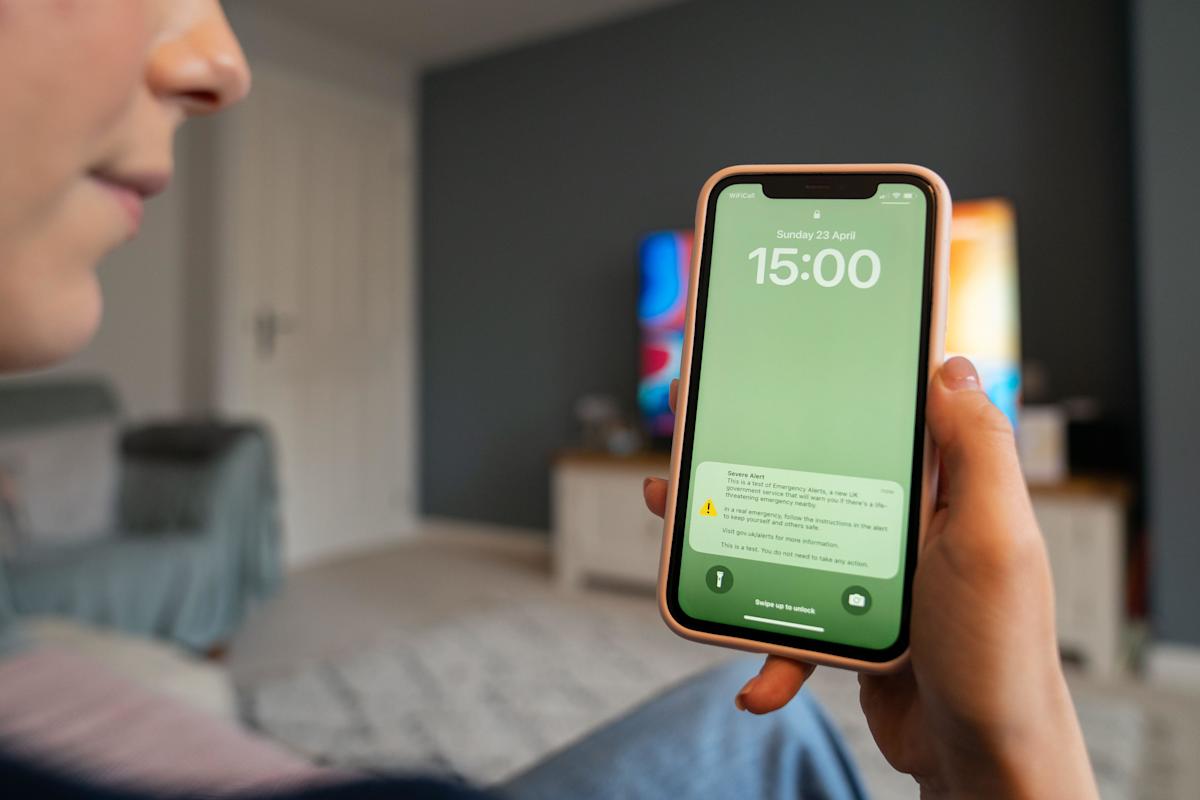An emergency alarm will ring out on people’s mobile phones across the country on one day in September as the government tests its emergency alert system.
In its second ever nationwide drill, the alert system will be tested at around 3pm on 7 September this year – with approximately 87 million devices vibrating and ringing out with a high-pitched alarm for about 10 seconds. The system is there to warn if there is a danger to life nearby, and has already been used for storms, flooding, and in one case when an unexploded Second World War bomb was discovered.
Pat McFadden, chancellor of the Duchy of Lancaster, is the Cabinet Office minister who has taken charge of efforts to boost national resilience against crises, said: “Emergency alerts have the potential to save lives, allowing us to share essential information rapidly in emergency situations including extreme storms.
“Just like the fire alarm in your house, it’s important we test the system so that we know it will work if we need it.”
Why does the emergency alert put some people at risk?
Domestic violence charities have raised concerns about these alerts potentially putting victims at risk, by alerting abusers to a victim’s hidden or second phone.
Lucy Hadley, head of policy at Women’s Aid, said: “For many survivors, a second phone which the perpetrator does not know about is an important form of communication with friends or family – as some abusers confiscate or monitor and control their partner’s phone.
“It may also be their only lifeline in emergencies. The emergency alerts pose a risk, not only because an abuser could discover a survivors’ second phone, but also because they could use this as a reason to escalate abuse.”
The first nationwide test was carried out in April 2023. (Alamy)
Emma Pickering, head of technology-facilitated abuse and economic empowerment at Refuge told Yahoo News: “We must be clear – abuse is always a choice a perpetrator makes, and technology itself is not responsible.
“When used correctly and as intended, technology can make vast improvements to our lives, and we know that having a hidden device, that can be used to access support without fear of being tracked, can offer a lifeline for many survivors. However, in the hands of a perpetrator of abuse, technology becomes another tool to misuse and weaponise, often with devastating effects.
“Abuse doesn’t happen because of an emergency alert, but we know that the widespread use of this system may be incredibly worrying for survivors with a hidden device.”
Ahead of this year’s test, the government said it will be running a public information campaign to notify people that the test is taking place, including communications targeted at vulnerable groups, such as victims of domestic abuse.
How to turn off the emergency alert
How to disable the emergency alert depends on your device, the government says.
iPhones and Android phones
Other mobile phones and tablets
Depending on your phone’s manufacturer and software version, emergency alerts settings may be called different names, such as “wireless emergency alerts” or “emergency broadcasts”, the government says.
The relevant settings can usually be found in one of the following ways:
-
Go to “message”, then “message settings”, then “wireless emergency alerts”, then “alert’
-
Go to “settings”, then “sounds”, then “advanced”, then “emergency broadcasts”
-
Go to “settings”, then “general settings”, then “emergency alerts”
Once you’ve followed one of the above three methods, turn off “severe alerts”, “extreme alerts” and “test alerts”.
There is also a step-by-step guide here on Refuge’s YouTube channel and a “secure your tech” guide here on the charity’s website.
The government also offers a guide on how to opt out of “operator test alerts”, which are carried out by the mobile network operators and the government to assess improvements made to the emergency alerts service.
Android phones and tablets
Search your phone’s settings for “emergency alerts” and turn off “test alerts”, “exercise alerts”, “operator defined” and “operator alerts”.
If you cannot see them in your settings:
-
Open your phone calling app
-
Use the keypad to enter *#*#2627#*#*
-
Search your settings for “emergency alerts” and turn off “test alerts”, “exercise alerts”, “operator defined” and “operator alerts”
Other mobile phones and tablets
As mentioned above, alert settings may have different names, such as “wireless emergency alerts” or “emergency broadcasts”, depending on the manufacturer and software version of your phone.
The settings can usually be found in one of the following ways:
-
Go to “message”, then “message settings”, then “wireless emergency alerts”, then “alert”
-
“Settings”, then “sounds”, then “advanced”, then “emergency broadcasts”
-
“Settings”, then “general settings”, then “emergency alerts”
Then turn off “test alerts”, “exercise alerts”, “operator defined” and “operator alerts”.
Most mobile phones and tablets will not get an operator test alert, the government says. The message will always have “operator” in the title and will confirm that no action is needed.
If you get an operator test alert, your phone may make a loud siren-like sound for about 10 seconds, unless it’s on silent.
Read more
